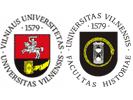In the creative legacy of Z. Ivinskis we have a number of works dedicated to Casimir, Lithuania’s saint of the 15th century. Apart from his monography “St. Casimir,“ published in New York in 1955, Z. Ivinskis had published four articles on this theme in the period 1953–58. How do these works of Z. Ivinskis differ from earlier writings dedicated to this theme? The first biography of St. Casimir was written by an Italian bishop, Zacharias Ferreri, already in the first decade of the 16th century. Later, authors – not excepting even the fairly critical and soberly-thinking famous bishop of Samogitia of 19th century, Motiejus Valančius – merely repeated the poor information gathered by the first biographer. The Polish historian Fr. Papee evaluates the writings of Z. Ferreri and his followers as follows: “How nevertheless poor is the biography written by him! How a living historical personage in it is drowned in the fog of legendary asceticism!“
Z. Ivinskis was the first to use methods of critical modern hagiography to research the biography of St. Casimir and the cause of his canonization. He pointed out that St. Casimir was not only a strong-willed ascetic but also an educated and gifted young man of the Renaissance period who actively took part in the country’s government and politics; he was a prince who on certain questions of political life had his views which not always concurred with the political line of the Roman pontiffs. Z. Ivinskis was the first to establish the fact that Pope Leo X had not written the bull that canonized Prince Casimir, and that in 1602 Clement VIII merely legalized his cult as saint. This in no way tarnished the halo of St. Casimir. On the contrary, the research of Z. Ivinskis (and later of P. Rabikauskas) reveals the personabality of Prince Casimir as kindred in his ideas to famous Christian politicians of the 20th century, such as Charles de Gaul, Robert Schuman, and Alcido de Gasperi. At the same time it confirms the idea of the 2nd Vatican Council that all people, no matter what their duties of profession, are called to perfection and holiness not excepting even politicians or rulers.
|


 dizainas ir programavimas giriaus
dizainas ir programavimas giriaus  dizainas ir programavimas giriaus
dizainas ir programavimas giriaus